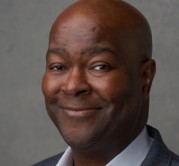Top ways leaders can drive CU effectiveness and relevance
The most critical roles and behaviors to include in your leader success profiles today

When a board hires a CEO or a CEO hires a staff member, it’s important to take time before advertising the position to ask, “What roles do we need this person to be skilled at doing?” and “What behaviors must they be able to exhibit?”
It can be tempting to go with what you know—to write the job description based on the things you liked about the person who last held the position or the qualities of someone you know at another credit union who seems to do the job well. A more objective way to write the position description is to consult recent research into which roles and behaviors are currently most important to success.
If you want to take this more studied approach, a new free report may be of assistance to you. This report asked credit union leaders and board members what they thought would be the most critical credit union leader roles and behaviors for driving effectiveness and relevancy for the industry in the next three to five years. The 73 respondents included 23 C-suite executives, 29 board members, 16 executives, three managers and two individual contributors from the U.S. and Canada.
Here’s a quick summary of the results.
Roles Leaders Must Fill: Culture- and Vision-Setters
The key competencies report defined a “role” as work that must be done no matter the organization type or size; something against which we hire, promote, pay and separate employees; and work that’s supported by various behavioral-based practices. Through a study of the talent literature, the report identified nine essential roles for top performance today.
Participants in the survey overwhelmingly indicated that to drive effectiveness in the next three to five years, credit union leaders must be able to fulfill the roles of “creating and cultivating culture” and “establishing a competitive and compelling vision.”
This result is in alignment with the industry’s motto of being “people helping people” and also what it takes to lead through the volatile, uncertain, complex and ambiguous environment in which our industry is operating.
Behaviors Leaders Must Practice: Developing Strategy, Leading Change and Critical Thinking
The report defined a behavioral “practice” as the specific knowledge, skills and attributes a leader needs to be successful. The research showed that the top three behaviors are “vision and strategy formation,” “leading change and transitions,” and “critical thinking.” Having a “growth mindset” and “motivating and influencing” others were the next highest-ranked behaviors.
Leaders, managers and individual contributors who are aligned with the roles and behaviors needed for success are a must-have. As the marketplace continues to shift, the needed roles and behavioral practices will change as well. Through membership, events and consulting, CUES is poised to help both credit union and nonprofit leaders stay on top of the best practices that will lead to success.

